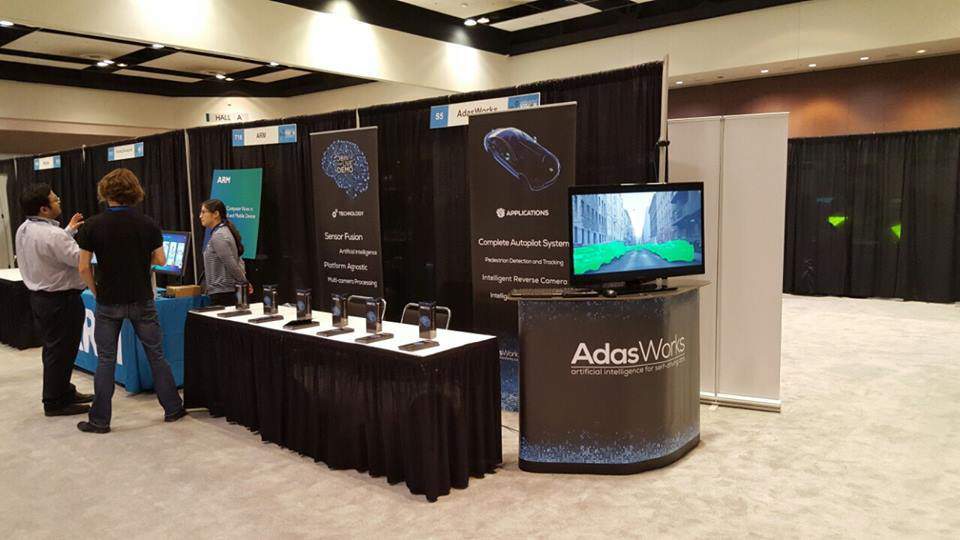The eyes of robot drivers will be put together in Budapest

Index.hu reports about a new use of artificial intelligence by Adasworks, because Budapest will host the process of putting together items that will function as the so-called ‘eyes’ of cars in the future. They are necessary for robot drivers to be able to identify everything while moving.
Predictably only electric cars will be allowed to travel with in just a few decades’ time, and, as their structure is rather simple, anyone may join their production. Therefore, the hardware would lose its value, and so the software will take over control on the automotive industry.
László Kishonti, founder and director of Adasworks told the site that they aim to become a really significant participant of this technology in travelling. The company works on the development of computer-based sight, supported by artificial intelligence, which would function as the eye of the car.
The surroundings will be observed through the photos of simple and cheap cameras. Thereafter the on-board computer will decide on where to go, and also what speed the car will go with. Adasworks also initiated a standard by which the system of the hardware would consume energy of less than 10W instead of 500W.

According to their plans, 6 cameras will be implemented in every car to ensure safe travelling, of which 2 will be in the front, in a way that their view could overlap, so in case something goes wrong with one camera that will not affect the driving, nor cause any trouble. Also, when it gets dark sensors using infrared would be activated.
A radar will be used too as a safety backup, but as it is not so trustworthy it would come handy only in extreme cases, when something covers the car completely blocking the view in a way not even a human driver could drive properly. Thus, the task in such cases is to make sure that the car can get aside on the road without crashing into something.
Another option instead of the radar would be the laser radar called lidar, which is used by Google as well, however, it is far too expensive (even the cheap version costs about 2 million HUF) and has a far too short lifespan. Furthermore, it would use gigabytes of data on every kilometre. The lidar’s greatest advantage is that the distance of every pixel is known.
The system uses numerous kinds of data when searching for safe roads for the car: the on-board maps have to be updated real-time, the objects appearing in the streets – e.g. bicycles, people, and vans – shall be identified, just like local territorial characteristics, such as Vespas in Italy.
Physical attributes of cars are also taken into account in relation to their brands and types. Also, one of the most important tasks of AI is to understand how the recognized objects will probably move: a standing person is likely to set off somewhere, whereas someone tottering is likely drunk, and thus requires more caution from a driver.
But before the robot drivers could be used they have to undergo several tests. In order to get some data, the team of Adasworks hacked a video game by which the AI could learn what different types of cars look like from different angles to ensure the recognition of the vehicles.
However, the game could not be used for business purposes, so the company made their own one, which included pedestrians and bikers as well. The team expands quickly: there are more than 100 employees nowadays, whereas a year ago there were only about 15. Also, they opened an office in the Silicon Valley just recently.
[button link=”https://dailynewshungary.com/codie-the-new-popular-hungarian-invention/” color=”black” newwindow=”yes”] Have you heard of Codie, a robot that teaches computer coding?[/button]
Besides, the team working in Budapest is about to move to a new office where even 200 people could work together. Employees were invited to Adasworks by offering them shares and 10% of the company was given out already. A capital of about 10.5 million EUR has been involved so far and the investors include the Robert Bosch Venture Capital.
The main goal of Adasworks is to be present in Europe, America and Asia, to make sure self-driving cars with a system that works well and is compatible with all cars that are used on these continents. According to Kishonti, the product, which does not control yet, but warns and breaks, would become available in 2018, while the version capable of driving a car around 2020-2022.
Photos: facebook.com/AdasWorksGmbH
Copy editor: bm
Source: index.hu





